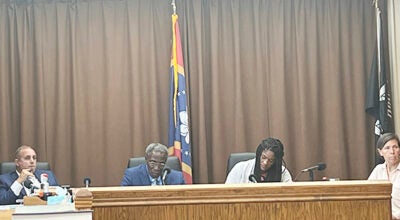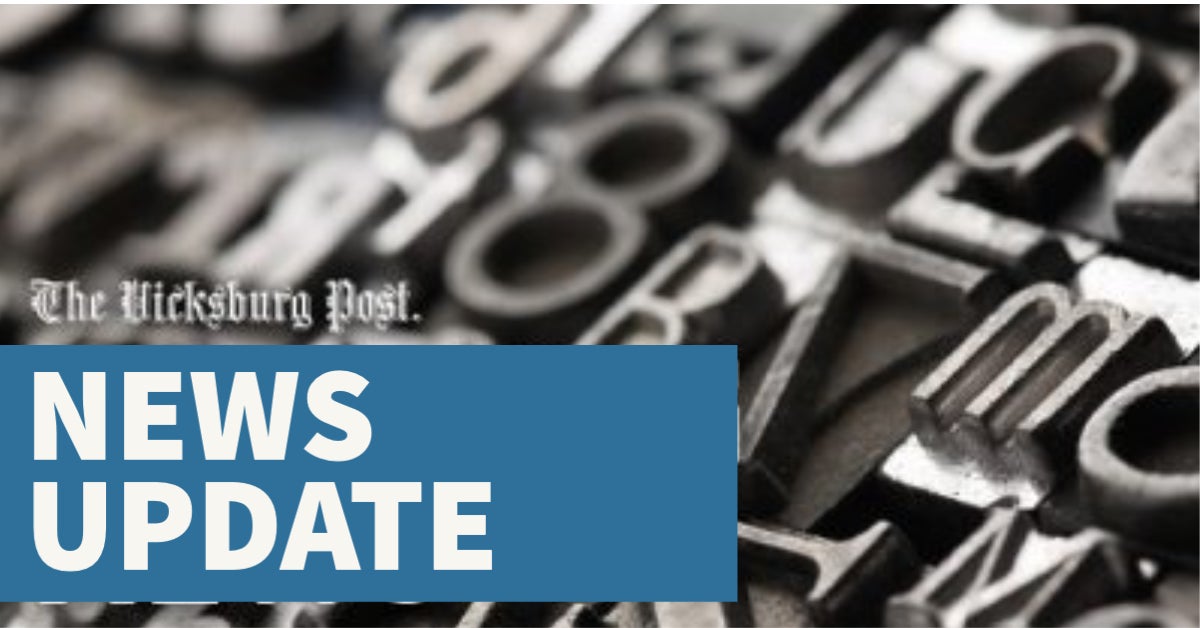Park flies flag for Australian buried here
Published 12:00 am Thursday, April 26, 2001
Bob Irish, left, and Terry Winschel, right, plant an Australian flag at the resting place of Edgar H. Hawter and Robert T. Middleton for ANZAC day Wednesday. (The Vicksburg Post/C. TODD SHERMAN)
[04/26/01] On Wednesday, ANZAC Day was commemorated in the Vicksburg National Military Cemetery, probably for the first time.
Acre after acre of the terraced burial ground contains the mortal remains of Union soldiers from the American Civil War.
Among the dead, however, is a lone Australian serviceman from World War II.
Flight Sgt. Edgar Horace Hawter of the Royal Australian Air Force was buried along with two Vicksburg servicemen in 1949, said Vicksburg National Military Park historian Terry Winschel, who also serves as sexton for the cemetery.
“He was killed in a plane crash on July 26, 1942, on the South Pacific island of British New Guinea,” Winschel said.
The term ANZAC is an acronym that stands for Australian and New Zealand Army Corps and dates to World War I when soldiers from the former British Empire served alongside British units. It is the No. 1 day when veterans of all wars are honored in the two nations.
How Hawter came to be buried in Vicksburg is not known exactly, but what is known is that killed in the same crash were Robert T. Middleton and Vernon McBroom, both sergeants in the U.S. Army Air Corps and both from Vicksburg.
Winschel said the area near Finschaffen, British New Guinea, was in Japanese hands at the time of the crash and the plane’s wreckage was not found until the following year when Allied forces moved in. When the wreckage was found, the remains of three men were inside, identified by dog tags. They were buried in the U.S. Air Force Cemetery at Finschaffen.
“For a reason not identified, his remains were brought to the United States in December 1949 along with those of two Americans and interred at the Vicksburg National Cemetery,” Winschel said.
After making the discovery about three years ago, Winschel contacted the Embassy of Australia in Washington, D.C., and talked with Rear Adm. Simon Harrington of the Office of Head Australian Defence Staff. The Australian Office of War Graves was aware of the location of Hawter’s remains, and his family was notified of it in 1949, Winschel said.
Harrington further said it was the policy of the Australian government to allow its servicemen’s remains to stay where they are buried unless the family asks they be repatriated.
When he contacted the admiral, Winschel asked for a small Australian flag to fly on the grave on days suggested by the admiral and if a suitable Australian headstone could be provided.
After saying he had sent the headstone request through channels and had no response yet, Harrington supplied a small flag and suggested it be placed on the grave on ANZAC Day and on Armistice Day, now known as Veterans Day, Nov. 11.





